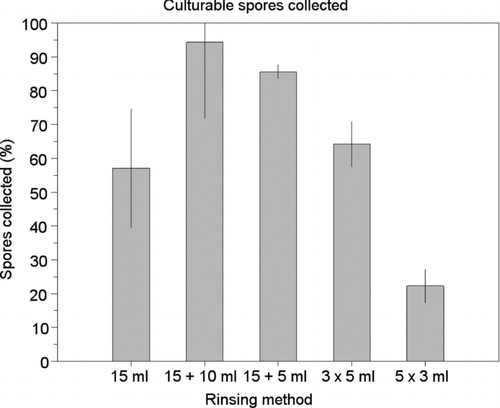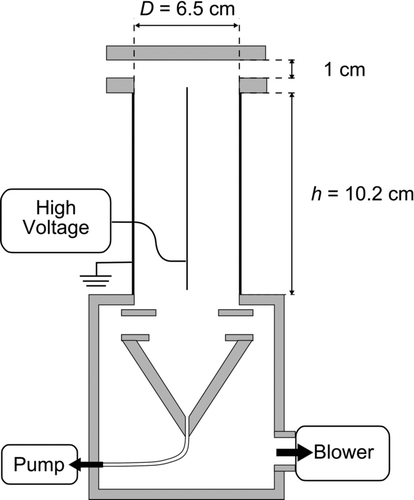Figures & data
TABLE 1 Studies on electrostatics precipitators (ESP) designed for the collection of biological materials and their working points; asterisks indicate parameters which were derived from the published data
FIG. 2 Air sampler efficiency evaluated theoretically (left) and experimentally (right) on 0.3–0.35 μm particles as a function of the flow rate and the applied voltage. Experimental values were averaged over four consecutive trials separated by a 4 h operation at full power. These averaged experimental points are represented by circles on the figure.
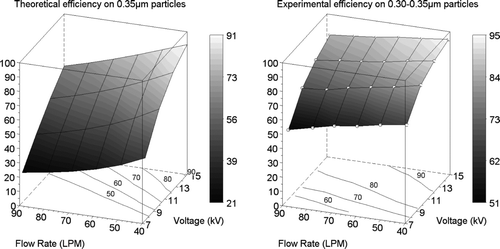
FIG. 3 Air sampler efficiencies measured on 0.3–0.35 μm particles at a flow rate of 90 LPM as a function of the applied voltage. Trials were separated by a 4 h operation at full power to investigate the stability of the results.
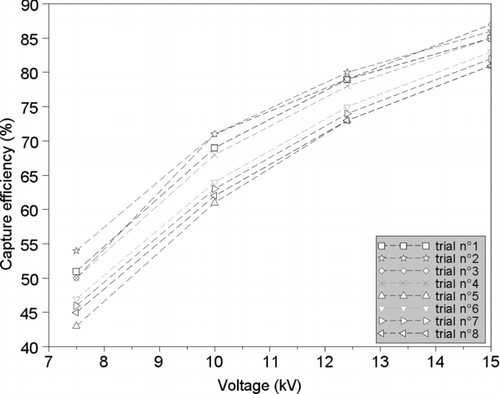
FIG. 4 Efficiency evaluated by using different rinsing solutions. Collected spores were eluted with an injection of 15 ml of different types of tensides after a collection time of 3 min and spore numbers were calculated by plate counting. Error bars indicate standard deviation of three collections.
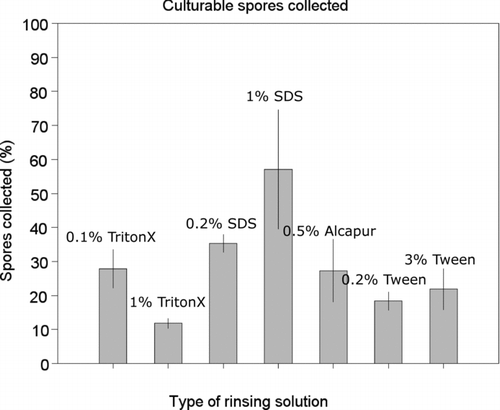
FIG. 5 Effects of different rinsing methods on spore elution with 1% SDS. Different number and volume of flushes were used as indicated. Numbers of spores were determined by plate counting. Error bars indicate standard deviation of at least two collections.
